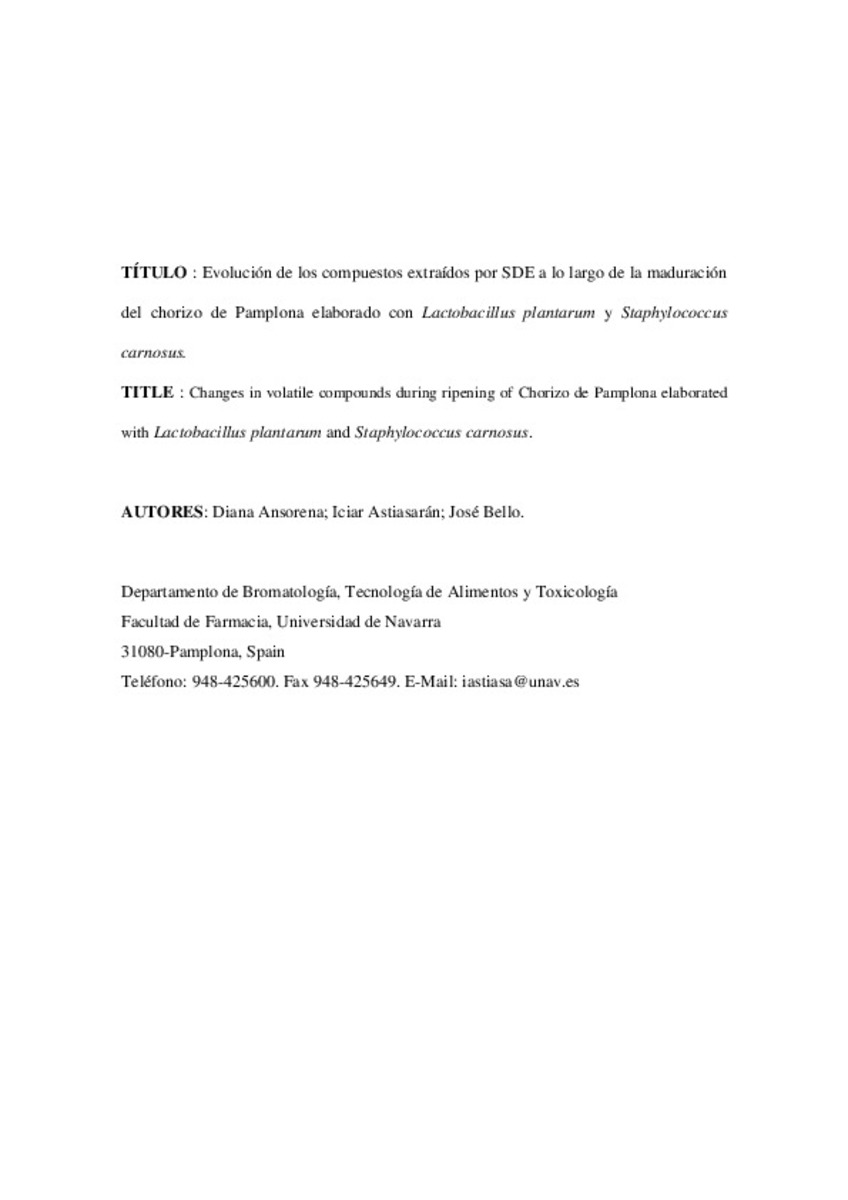Changes in volatile compounds during ripening of Chorizo de Pamplona elaborated with Lactobacillus plantarum and Staphylococcus carnosus.
Otros títulos :
Cambios en los compuestos volátiles durante la maduración del chorizo de Pamplona elaborado con Lactobacillus plantarum y Staphylococcus carnosus
Palabras clave :
Chorizo
Sausages
Fermentation
Ripening
Volatile compounds
Fecha de publicación :
2000
Cita:
Ansorena D, Astiasarán I, Bello J. Changes in volatile compounds during ripening of chorizo de Pamplona elaborated with Lactobacillus plantarum and Staphylococcus carnosus. Food Sci Technol Int 2000 December 01;6(6):439-447
Aparece en las colecciones:
Estadísticas e impacto
0 citas en

0 citas en

Los ítems de Dadun están protegidos por copyright, con todos los derechos reservados, a menos que se indique lo contrario.











